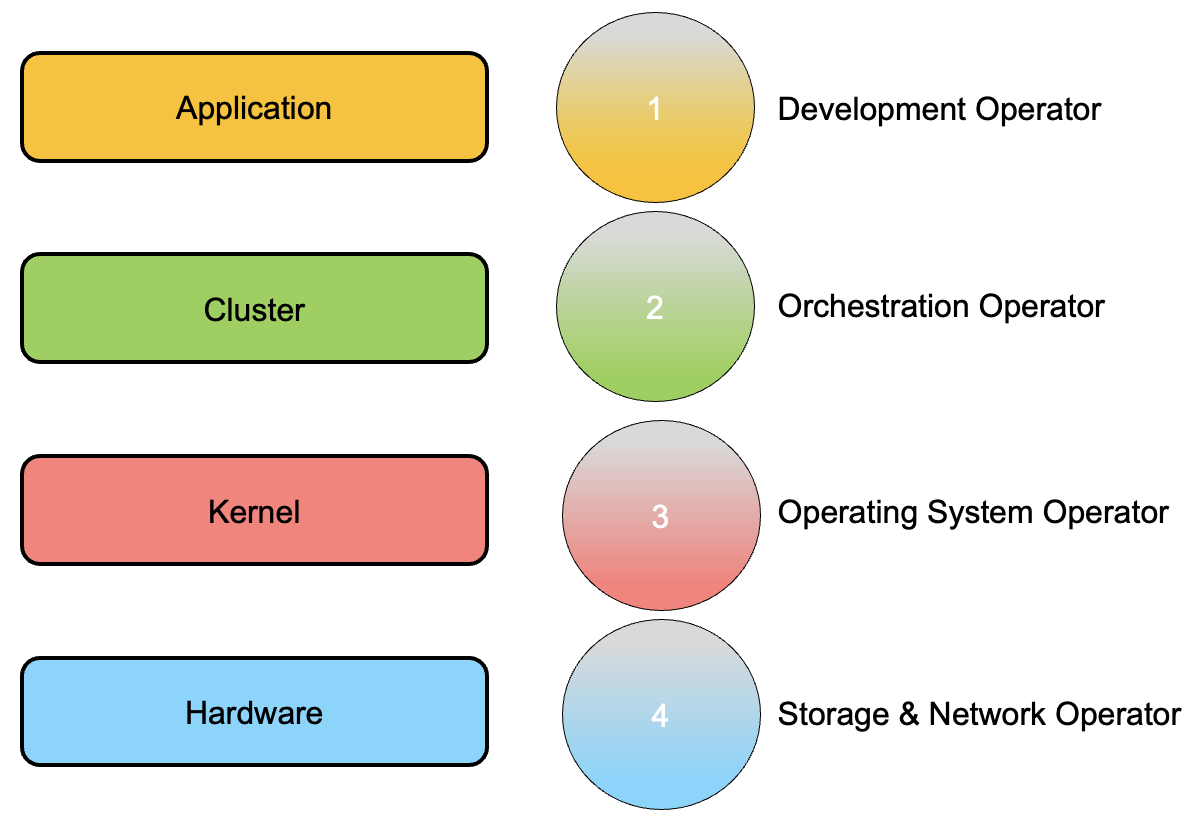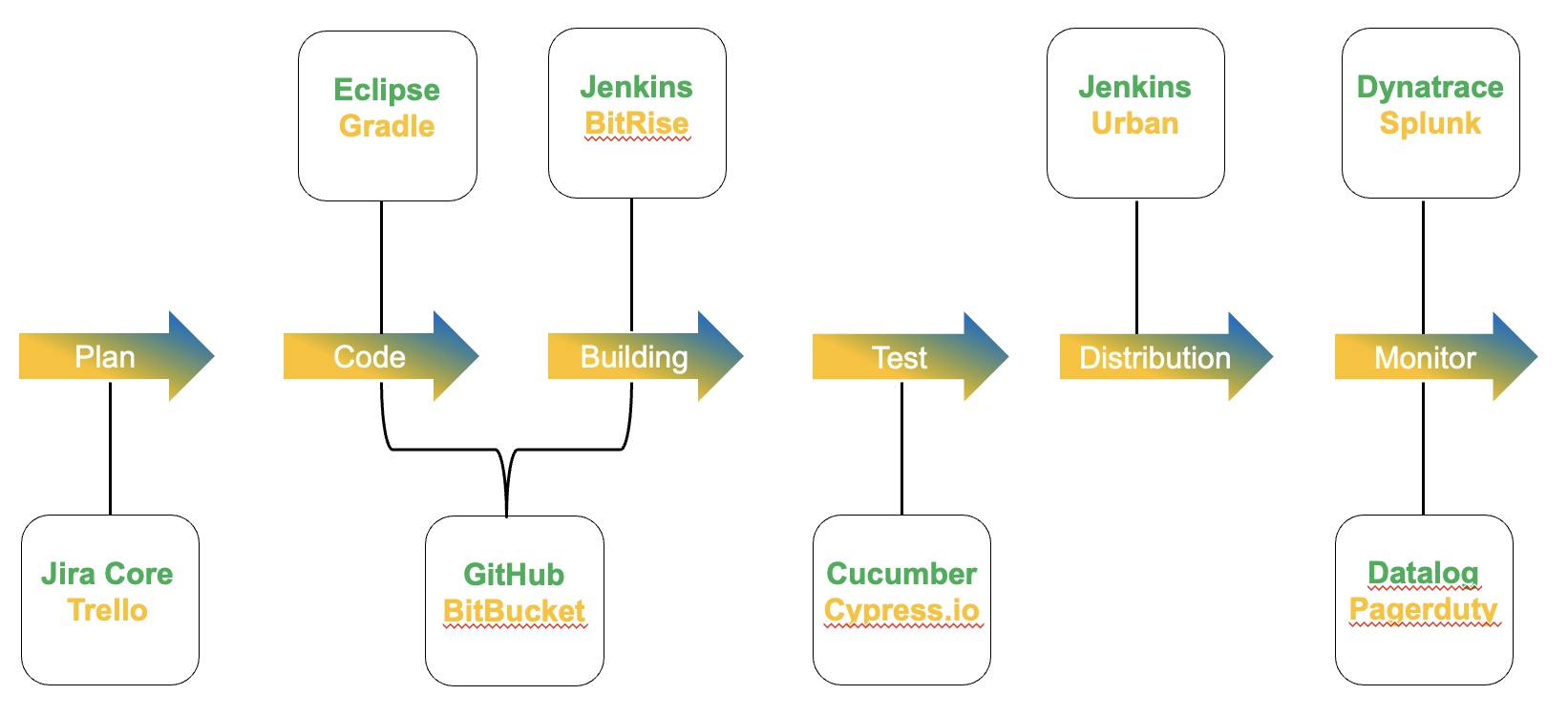
This new article aims to indicate the new job opportunities created by a cloud-native environment.
Image n ° 1 shows the four main levels required by the architecture to function correctly ( left rectangular part).
On the right side ( circles ) are represented the occupations of the operator with respect to every single level.
 Picture 1
Picture 1
Bottom up:
1- Storage and Network Operators ( SNOs ) are responsible for managing the hardware architecture.
Role activity number may decrease if deployed in a public cloud or IaaS (Infrastructure as a Service)
2- The Operating System Operator ( OSO ) works at the level of the operating system where the k8s service is running.
The OSO needs expertise in Linux and Windows . Skills in virtualization architecture such as VMware , RedHat , Nutanix , etc. are often required.
If the architecture has been leased from the public cloud or in an IaaS in general, the skills must cover this new architecture.
3- The orchestrator operator (OO) works with the core of the cloud-native administration environment. This world needs a lot of new skills.
Automation is the child of orchestration.
The main concept is that the OO should have sufficient skills to be able to follow all the processes of “Continuous Integration” and “Continuous Delivery” (often called CI / CD ).
Image 2 gives an idea about it
The central arrows show the flow to allow the delivery of a service.
For every single arrow, there are new tools to know to manage the entire release of the service.
Just a few examples: to test the environment you can work with cucumber or Cypress.io, for distribution and construction you can use Jenkins … and so on …
 Image 2
Image 2
Note 1 There are so many platforms available that choosing the right one can be very challenging
4- The development operator is the role of the people who are writing lines of code. They often use software to run businesses like Jira Core and Trello.
Note 2: In my personal opinion, the vendor who creates a software layer capable of centrally managing all these 6 core activities will have a competitive advantage over their competitors.
The big vendors are already playing: RedHat is working from the beginning with its platform ( OpenStack ), VMware has released Tanzu, Nutanix with Carbonite and Microsoft will play its role with the new version of Windows 2022 .
The only good suggestion I can give you is to study this new and fantastic world.
See you soon and take care of yourself

